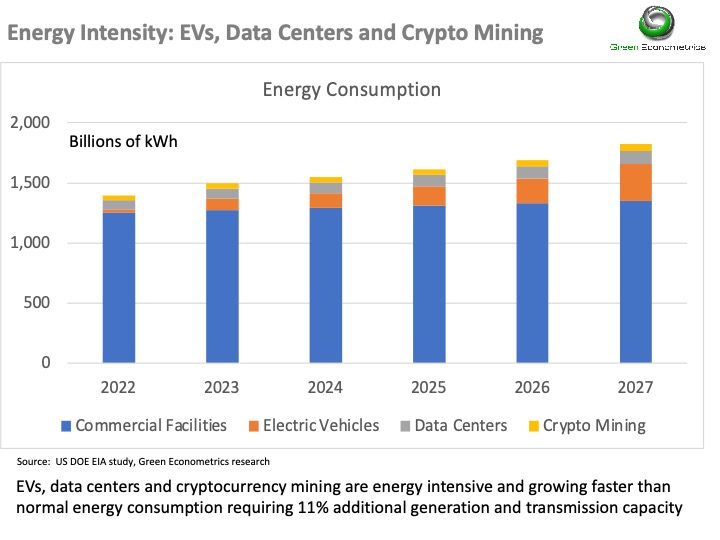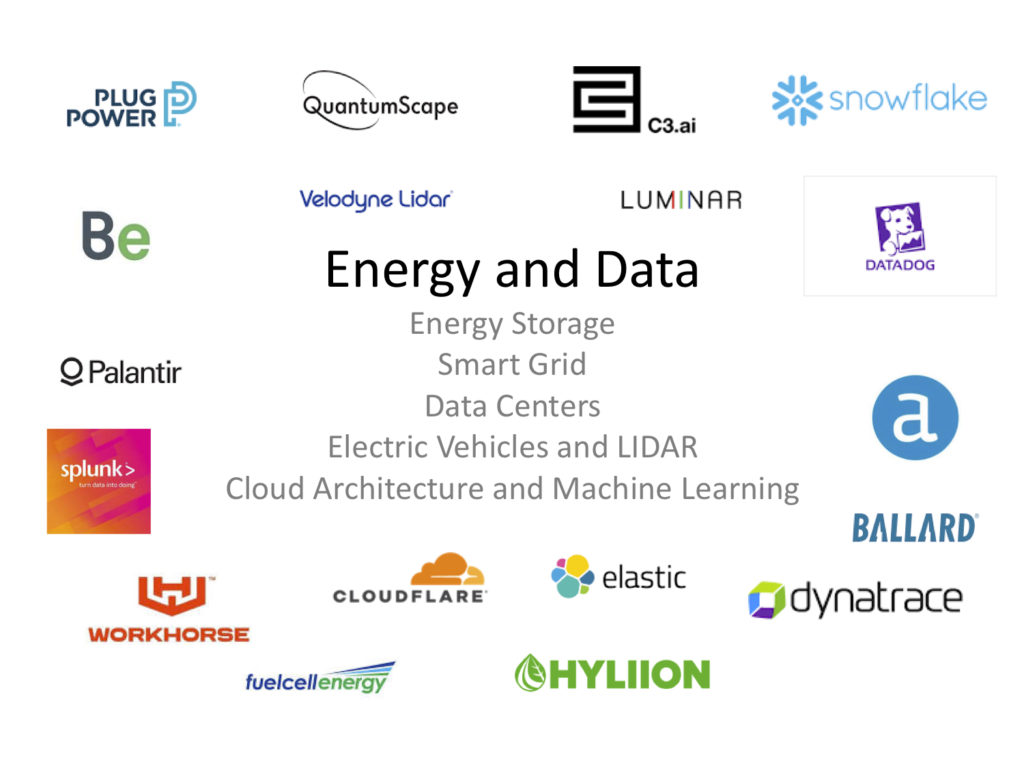Why EVs, Digital Transformation and Crypto will Impact Utility Grid
The US utility grid, comprised of electric generation, transmission (high voltage long distance transport) and distribution (last mile connection to end user) consumes approximately 3.8 trillion kilowatt hours (kWh) with 1.28 trillion kWh in commercial use or roughly 34% of the grid.
In 2021, Electric Vehicles (EV) represented approximately 3% of the registered vehicles in the US. The U.S. Department of Transportation’s Federal Highway Administration states the average person drives around 13,500 miles every year. The average electric car consumes 34.5 kWh per 100 miles. This works out as 0.346 kWh per mile. https://ecocostsavings.com/electric-car-cost-per-mile/ That amounts to 36 billion kWh or 1% of the electric grid.
Vehicle manufacturers are projecting substantial migration to EVs which will increase the impact on the grid. When EVs account for 25% of total vehicles, an additional 7% of grid capacity will be required.
The required grid buildout will be complicated further by the adding huge numbers of physical EV charging locations. The Federal Government has just allotted $5 billion to assist states that have aggressive charging station construction plans. Bottom line: the EV transformation will have a trillion-dollar impact on the economy — driven by the 30%-to-60% energy efficiency gain of EVs over internal combustion engines.
Currently, there are over 160,000 fueling locations around the country such as gas stations and convenience stores. EV charging units, not individual locations, just a power connector, are estimated to be at around 36,000. What is important to note is that the majority of these legacy EV charging systems are Level 1 and Level 2 type requiring charge times of an hour to go 100 miles. These legacy EV charging systems are not conducive for vehicle commuting behavior. Who can wait an hour to charge their vehicle?
The trend is for next generation fast charge (FC) and extreme fast charge (EFC) EV charging systems that are capable of extending range and providing faster charge times more indicative of the average gas refueling time. The limitation is that the number of FC and EFC charging locations is minute. Tesla operates over 20,000 Supercharger connections globally but only 908 physical US locations.
The bottom line is that the buildout to support fast charging EVs will require extensive capital investment and generation capacity that is further complicated by managing distributed energy resources such as DC power conversion, energy storage and renewable energy.
While EVs are changing the utility landscape, digital transformation – where greater reliance is required by expanding data centers that consume substantially more energy than manufacturing facilities – is consuming energy at an even faster rate. The economics of cloud computing, machine learning, AI chips, and analytics-driven business models are only accelerating this digital transformation and dependence on data centers. When one adds crypto currency mining to the mix, the utility grid will predictably undergo substantial change. At current growth projections, Green Econometrics forecasts that EVs, data centers and crypto mining will require an additional 11% energy generation and grid capacity by 2027.

